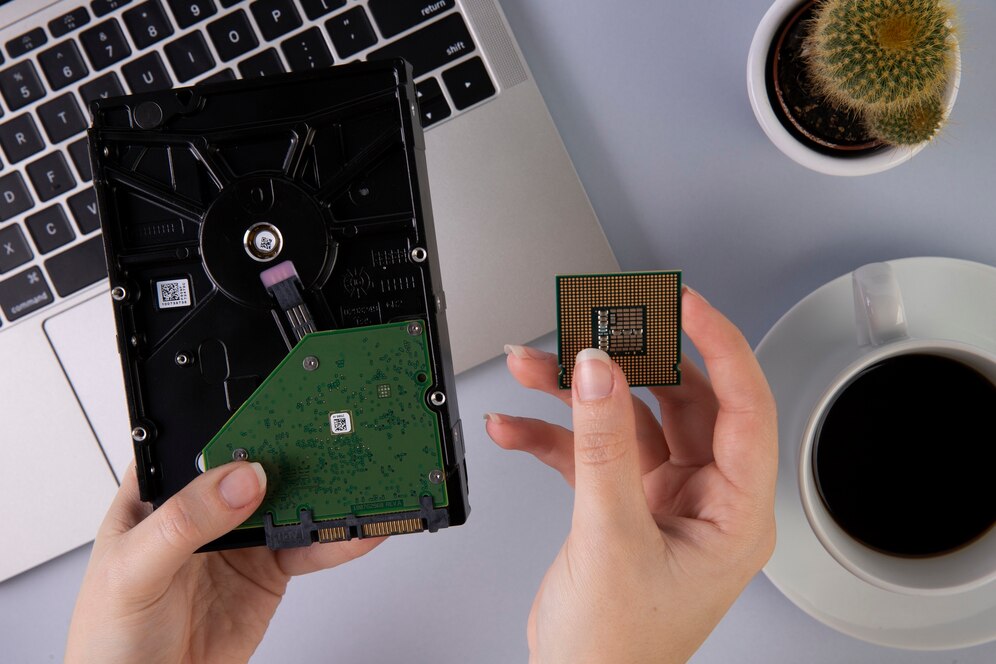ROM Full Form: Read-Only Memory

Navigating the Digital Landscape: Understanding the ROM Full Form
In the world of technology and computing, acronyms are the building blocks of our digital vocabulary. One such acronym that holds a pivotal role in understanding computer systems is “ROM.” You’ve likely encountered this term in various contexts, but have you ever wondered what “ROM” stands for? In this article, we’ll unravel the mystery behind the ROM full form and explore its significance in the realm of computing.
ROM Full Form: Read-Only Memory
Defining ROM: “ROM” stands for Read-Only Memory, which is a type of computer memory that stores data that is permanently written during manufacturing and cannot be easily modified or deleted by normal computer operations. Unlike volatile memory like RAM (Random Access Memory), which loses its data when the computer is turned off, the data stored in ROM remains intact even when the power is switched off.
Understanding the Significance of ROM
Read-only memory plays a crucial role in the functionality of computer systems and electronic devices. Here are some key aspects that highlight the significance of ROM:
- Permanent Storage: ROM serves as a repository for essential software, firmware, and instructions that are necessary for the proper functioning of a device. Since the data in ROM is not erased when the power is off, it ensures that critical information is always available.
- Bootstrapping: When a computer or device starts up, it requires initial instructions to begin operations. These instructions are often stored in ROM and are used to bootstrap the device, loading more complex software from other storage mediums like hard drives or flash memory.
- Embedded Systems: ROM is commonly used in embedded systems, which are specialized computing systems integrated into larger devices like appliances, vehicles, and industrial machinery. These systems rely on ROM to store specific operating instructions and functions.
- Data Security: Since data in ROM cannot be altered or deleted by normal software operations, it can be used to store critical data, encryption keys, and other sensitive information that needs to be protected from unauthorized access or tampering.
- Stability and Reliability: The data stored in ROM remains consistent over time, providing stability and reliability to the device. This is particularly important in scenarios where data integrity is paramount.
- Legacy Systems: While modern computing heavily relies on rewritable memory and storage technologies, older computer systems and devices often utilize ROM for storing legacy software and firmware.
Types of ROM
There are several types of ROM, each with its own characteristics and use cases:
- Mask ROM (MROM): Data is permanently written during manufacturing, and it cannot be altered. It is cost-effective for large production runs but lacks flexibility.
- Programmable ROM (PROM): Users can write data onto the chip using a special device called a programmer. Once programmed, the data becomes permanent and cannot be changed.
- Erasable Programmable ROM (EPROM): Similar to PROM, but the data can be erased using ultraviolet (UV) light exposure. This allows for reprogramming, but the process is time-consuming and requires removing the chip from the device.
- Electrically Erasable Programmable ROM (EEPROM): Data can be erased and reprogrammed electronically. EEPROMs offer more flexibility than EPROMs and are commonly used for firmware updates.
- Flash Memory: A type of EEPROM that allows for erasing and reprogramming in blocks or sectors. Flash memory is widely used in modern devices like USB drives, memory cards, and solid-state drives.
Conclusion
“ROM,” or Read-Only Memory, represents a fundamental aspect of computing technology that provides stability, reliability, and essential instructions to various devices and systems. It serves as a cornerstone in the digital landscape, ensuring that critical data and instructions are available whenever needed. The next time you encounter the term “ROM,” you’ll have a deeper appreciation for its role in powering the devices that shape our modern world.